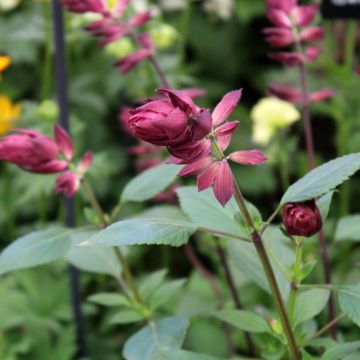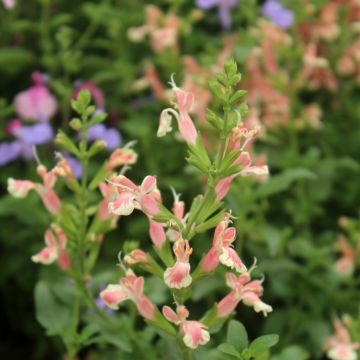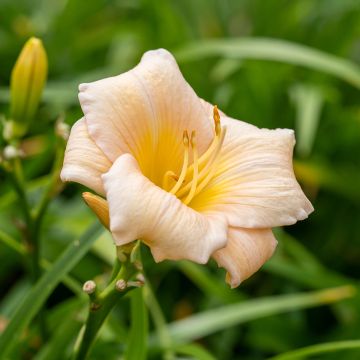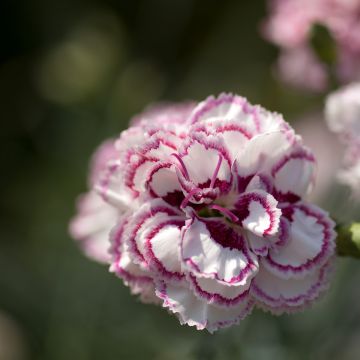

Salvia microphylla Blue Note
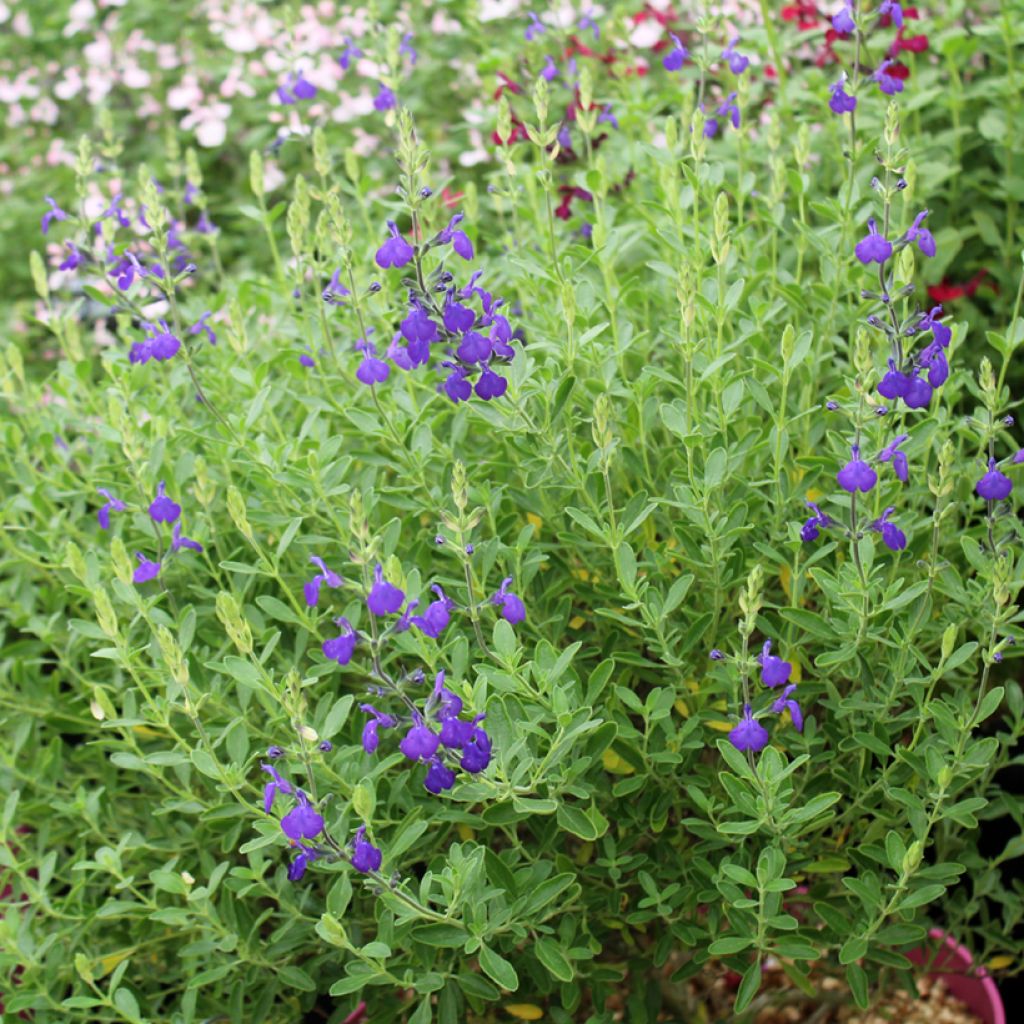

Salvia microphylla Blue Note


Salvia microphylla Blue Note
Salvia microphylla Blue Note
Salvia x microphylla Blue Note®
Sage
This item cannot be shipped to the selected country
Delivery charge from €6.90
Delivery charge from €6.90
More information
Delivery charge from €6.90
Delivery charge from €6.90
More information
Schedule delivery date,
and select date in basket
This plant carries a 12 months recovery warranty
More information
We guarantee the quality of our plants for a full growing cycle, and will replace at our expense any plant that fails to recover under normal climatic and planting conditions.
From €7.90 for pickup delivery and €6.90 for home delivery
Express home delivery from €8.90.
From €7.90 for pickup delivery and €6.90 for home delivery
Express home delivery from €8.90.
Does this plant fit my garden?
Set up your Plantfit profile →
Description
The Salvia 'Blue Note' is a recently developed shrubby sage that has small, dark green and aromatic leaves. It blooms continuously from summer to frost, as long as it gets some watering during dry periods. This variety is also known for its slightly upright habit and great performance in pots. Microphylla type salvias are not very demanding in terms of water, they are remarkably floriferous and sturdy, but moderately hardy. When combined with varieties that have fuchsia pink or velvet red flowers, this plant can create a stunning and sumptuous display in the garden or on the terrace.
Salvia microphylla grahamii, also known as Graham's sage, is a woody perennial plant of the Lamiaceae or labiate family native to the Mexican mountains and southern Arizona. Salvia 'Blue Note' has a slightly spreading bushy habit that grows as wide as it is tall, reaching about 60 cm (23.6 in) in all directions with rapid growth. It generously produces nectar-rich and honey-producing flowers from the beginning of summer until autumn, until cold weather stops the flowering. The flowers are small and elongated, measuring 2 cm (0.8 in) in length and are adorned with a royal blue colour of rare intensity enhanced by small bracts tinged with midnight blue and purple. The flowers only last a day, covering the ground with their petals in the evening, but will already be replaced the following day. The semi-evergreen foliage comprises small, ovate leaves with crenate edges, 3 cm (1.2 in) long, dark green, thick and aromatic, a bit sticky, releasing a strong acidic odour when heated. The leaves sometimes take on lovely yellow and purple hues in autumn.
The 'Blue Note' sage is a robust and spectacular plant that can survive temperatures as low as -10°C. It quickly develops and covers flowerbeds with its incredibly blue flowers. It can thrive in well-drained, even poor soil, in a sunny or semi-shaded location. During autumn, the lower light enhances the flowering of shrubby salvias, giving it a magical appearance, like tiny stained glass windows.
'Blue Note' sage can be paired with various other plants. It can accompany the spring bloom of rockroses, rosemary, and red penstemons. The result is truly fabulous when combined with pink autumn asters and 'Royal Bumble' salvias or the wild species S. grahamii. Additionally, it can be paired with gauras, tall sedums, shrubby potentillas, and the silver foliage of artemisias or cinerarias to create a charming picture.
If you have a terrace, 'Blue Note' sage can be planted in a large pot beside a Sesbania punicea and vibrant orange sweet peas to create a fantastic colour combination!
Salvia microphylla Blue Note in pictures


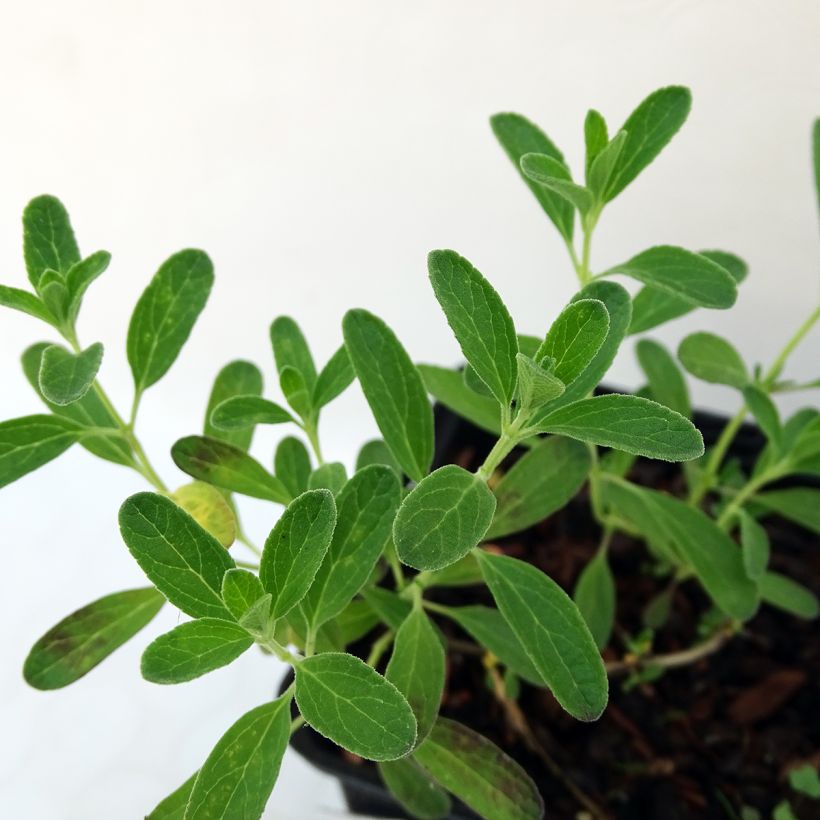



Flowering
Foliage
Plant habit
Botanical data
Salvia
x microphylla
Blue Note®
Lamiaceae
Sage
Cultivar or hybrid
Other Salvia - Sage
View all →Planting and care
Sage with small leaves is an easy-to-grow plant that can be planted throughout the year, except during frost periods. It can withstand temperatures as low as -10°C in well-drained soil, in areas that receive ample sunlight and are sheltered from the wind. It thrives in light, moist, and well-drained soil but can also adapt to dry soil. It is better to forget to water it rather than to overwater it. When planting, adding a base fertiliser such as blood, fish and bone is recommended. During extended periods of drought in summer, watering is beneficial. Apply a mulch or cover the plant with a winter veil in preparation for cold weather. Prune the stems that compromise symmetry and trim them to 20 cm (7.9 in) above the ground after the last strong spring frosts (in March-April, depending on the region). Remove faded flowers whenever possible. Note that snails and slugs love young shoots.
Planting period
Intended location
Care
-
, onOrder confirmed
Reply from on Promesse de fleurs
Summer flowering perennials
Haven't found what you were looking for?
Hardiness is the lowest winter temperature a plant can endure without suffering serious damage or even dying. However, hardiness is affected by location (a sheltered area, such as a patio), protection (winter cover) and soil type (hardiness is improved by well-drained soil).

Photo Sharing Terms & Conditions
In order to encourage gardeners to interact and share their experiences, Promesse de fleurs offers various media enabling content to be uploaded onto its Site - in particular via the ‘Photo sharing’ module.
The User agrees to refrain from:
- Posting any content that is illegal, prejudicial, insulting, racist, inciteful to hatred, revisionist, contrary to public decency, that infringes on privacy or on the privacy rights of third parties, in particular the publicity rights of persons and goods, intellectual property rights, or the right to privacy.
- Submitting content on behalf of a third party;
- Impersonate the identity of a third party and/or publish any personal information about a third party;
In general, the User undertakes to refrain from any unethical behaviour.
All Content (in particular text, comments, files, images, photos, videos, creative works, etc.), which may be subject to property or intellectual property rights, image or other private rights, shall remain the property of the User, subject to the limited rights granted by the terms of the licence granted by Promesse de fleurs as stated below. Users are at liberty to publish or not to publish such Content on the Site, notably via the ‘Photo Sharing’ facility, and accept that this Content shall be made public and freely accessible, notably on the Internet.
Users further acknowledge, undertake to have ,and guarantee that they hold all necessary rights and permissions to publish such material on the Site, in particular with regard to the legislation in force pertaining to any privacy, property, intellectual property, image, or contractual rights, or rights of any other nature. By publishing such Content on the Site, Users acknowledge accepting full liability as publishers of the Content within the meaning of the law, and grant Promesse de fleurs, free of charge, an inclusive, worldwide licence for the said Content for the entire duration of its publication, including all reproduction, representation, up/downloading, displaying, performing, transmission, and storage rights.
Users also grant permission for their name to be linked to the Content and accept that this link may not always be made available.
By engaging in posting material, Users consent to their Content becoming automatically accessible on the Internet, in particular on other sites and/or blogs and/or web pages of the Promesse de fleurs site, including in particular social pages and the Promesse de fleurs catalogue.
Users may secure the removal of entrusted content free of charge by issuing a simple request via our contact form.




































